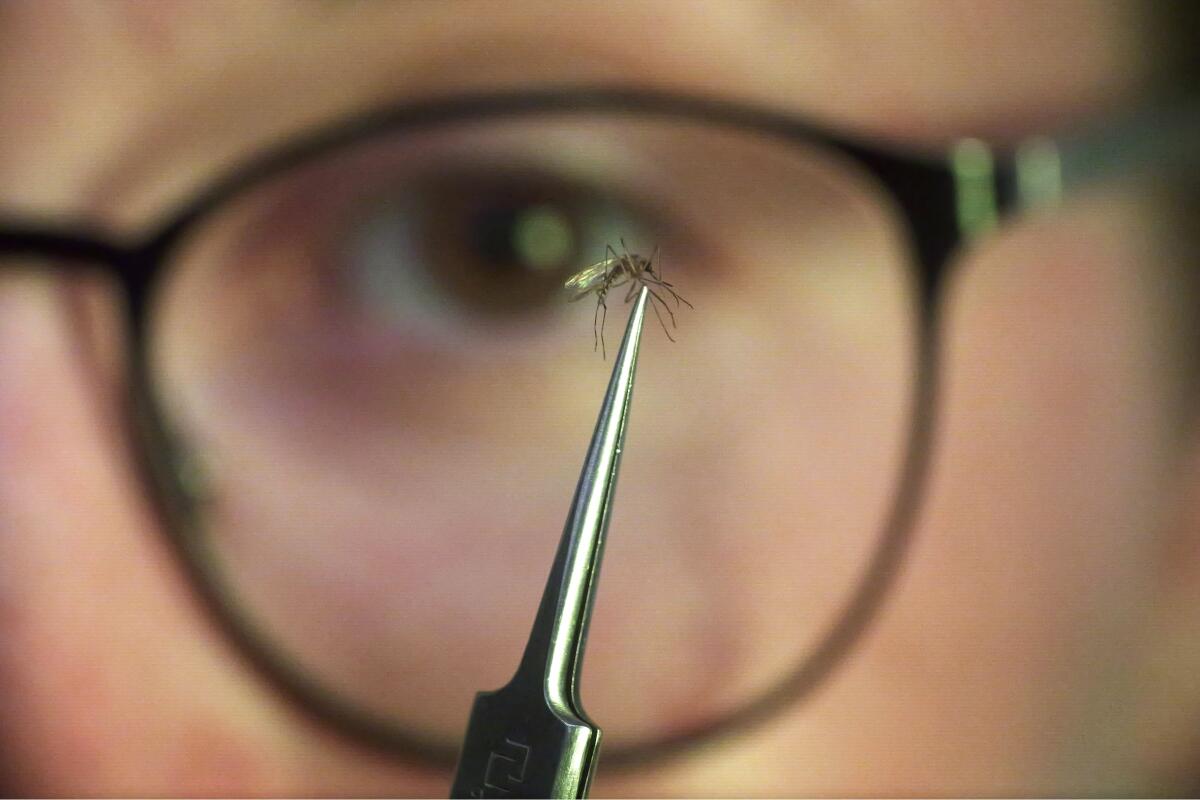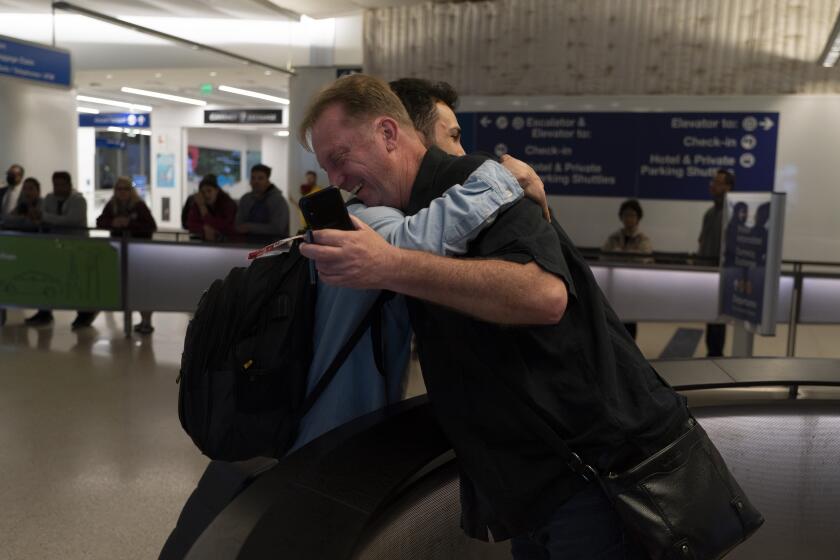Let skeeters feed on you for science? Welcome to front lines of mosquito control

SALT LAKE CITY — It’s lunchtime at the Salt Lake City Mosquito Abatement District and a colony of sabethes cyaneus — also known as the paddle-legged beauty for its feathery appendages and iridescent coloring — find their way to Ella Branham.
“They’re not very aggressive and they’re kind of picky eaters,” said Branham, a technician, as she exhaled into a glass tank to attract the insects to the carbon dioxide in her breath. “So I’ll be feeding them with my arm.”
Branham had volunteered to let the South American mosquitoes feed on her blood so they can produce eggs and maintain the colony for education and research at the lab in the Salt Lake City district. It’s one of the many mosquito control districts around the United States that seek to hold in check one of the world’s deadliest animals — one well-positioned to thrive as climate change fosters a warmer and wetter environment.
Mosquitoes can carry viruses including dengue, yellow fever, chikungunya and Zika. They are especially threatening to public health in Asia and Africa but are also closely monitored in the United States. Local agencies reported more than 1,100 cases of West Nile virus in 2022, according to the U.S. Centers for Disease Control and Prevention.
Navy veteran Michael White of San Diego, who was jailed in Iran for years, recently repaid the generosity of a fellow inmate who helped him behind bars.
Most humans who contract West Nile show no symptoms. But for some, it can cause vomiting, fever and in rare cases seizures or meningitis. Over roughly the last 25 years, nearly 3,000 deaths and more than 25,000 hospitalizations linked to West Nile were reported throughout the United States — most of them in August.
West Nile deaths have been reported this year in states including Texas and Colorado, and mosquitoes are thought to be the source of “locally acquired” malaria infections of people in Maryland, Florida and Texas.
Ary Faraji, an entomologist and the executive director of the Salt Lake City mosquito abatement district, said monitoring shows the mosquito season starting earlier and lasting longer as the climate has warmed. The district used to historically shut down each year in mid-September, but that has gotten later and later. Last year, district workers were still setting and checking traps until Thanksgiving.
And this year — where an abnormally snowy winter and a very rainy spring left more water across the landscape for mosquitoes to breed in — his staff estimated that there were five times as many mosquitos in May compared with the average year.
That’s where the health threat comes in. While males and females feed on sugar or nectar throughout their lives, females require blood meals to nourish and develop their eggs.
“They are the true vixens,” Faraji said. “Some can be so beautiful and yet some can be so deadly.”
Faraji’s staff — made up of scientists and college and doctoral students — traps, sorts and tests mosquitoes for viruses using drones, boats and ATVs. Their work takes into account how trends including weather patterns and population growth will affect disease transmission.
“The more people you put in a closer vicinity of where the mosquitoes are, the higher chance of pathogen transmission,” he said, noting the challenges of the wetland areas surrounding Utah’s Great Salt Lake.
Though dangerous, mosquitoes are also critical to ecosystems throughout the world, with various species serving as pollinators or food sources to fish, birds and frogs.
“We try to maintain a balance and suppress them to the point that they’re not negatively affecting communities,” Faraji said. “Taking them away would definitely negatively impact our ecosystem overall.”
More to Read
Sign up for Essential California
The most important California stories and recommendations in your inbox every morning.
You may occasionally receive promotional content from the Los Angeles Times.











